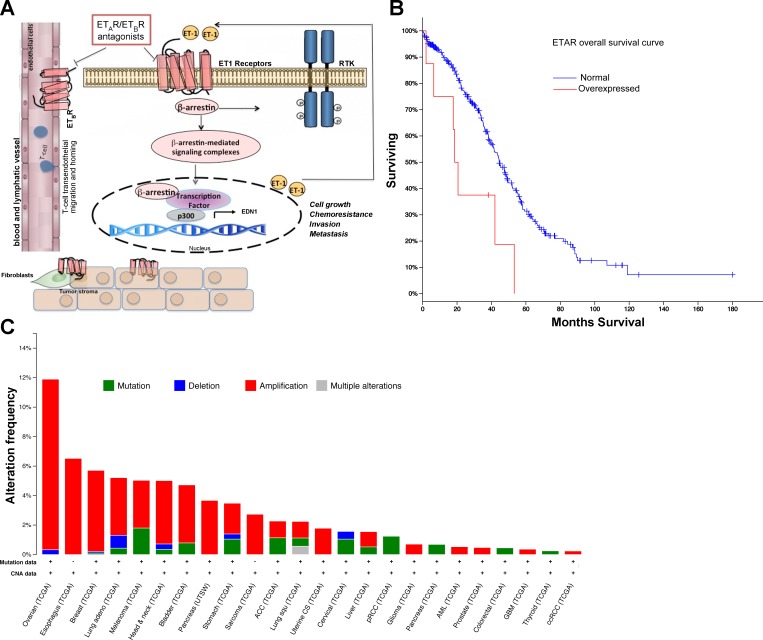Fig. 1.
A: schematic model describing the potential mechanism by which β-arrestin-1 (β-arr1) regulates endothelin-1 (ET-1)-induced signaling pathways. In tumor cells ET-1 binding on receptors leads to recruitment of β-arr1. Then β-arr1 shuttles into the nucleus, where it interacts with a different transcriptional factor to form a complex with p300 required for histone acetylation and for the transcription of target genes, such as ET-1. This mechanism leads to the amplification of the ET-1 autocrine loop. As a signal transducer, β-arr1 initiates the transactivation of different receptor tyrosine kinase (RTK). In parallel, the autocrine/paracrine production of ET-1 activates ETBR expressed on endothelial cells to promote angiogenesis and lymphangiogenesis and on microenvironmental cells. The dual ETAR and ETBR antagonist targets not only cancer cells (which express ETAR and ETBR) but also targets tumor-associated stromal elements, which express ETBR, impairing growth, invasion, neovascularization, chemoresistance, and metastatic spread, and enhancing antitumor immune mechanisms. B: ETAR overexpression is associated with improved survival of patients with ovarian cancer. Overall survival of 315 patients with high-grade serous ovarian cancer and ETAR overexpression compared with normal expression (P < 0.01). Data were retrieved from TCGA data portal. C: β-arr1 is amplified in various human cancers. The cBio Cancer Genomics Portal (http://www.cbioportal.org/public-portal/) was queried for ARBB1 across various tumor datasets. The alteration frequency, type of alterations of β-arr1 gene (ARRB1), availability of mutation analysis, and Copy Number Alteration (CNA) in the various tumor cohorts are shown.

